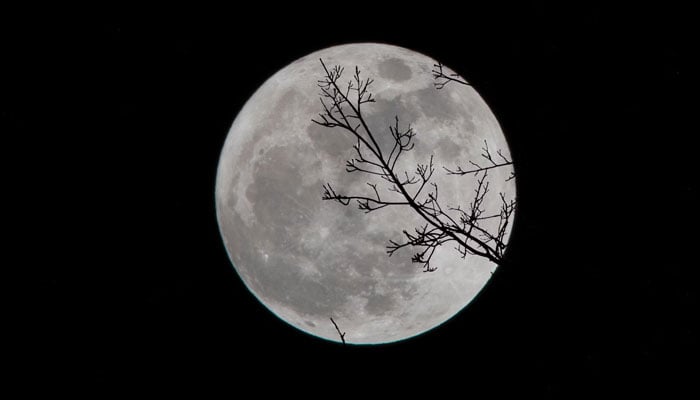'Wolf moon' expected to rise tonight. Here's what we know
Moon's 29.5-day cycle includes a full moon every month, which may not always occur on same day
January 25, 2024

The first full moon of the year, also known as “Wolf moon”, is set to shine Thursday night, with Venus, Mercury and Mars visible early Friday morning thanks to the moon’s rays, Forbes reported.
The "Wolf moon" will reach its peak at 12:54 pm ET, with most of the Northern Hemisphere visible later in the evening, according to the United States Naval Observatory.
The Wolf Moon, named after the packs of wolves heard howling outside villages during winter, typically around January, will be visible for a small portion of the day, with moonrise occurring at 4:56 pm and sunset occurring eight minutes later at 5:04 pm.
Other planets will be illuminated under the full moon’s light: Venus will rise at 5:11 am on Friday, and Mercury will rise almost an hour later at 6:05 am, followed by Mars at 6:09 am.
National Aeronautics and Space Administration (Nasa) reports that the moon's 29.5-day cycle includes a full moon every month, which may not always occur on the same day.
The moon undergoes eight phases during this time: new moon, waxing crescent, first quarter, waxing gibbous, full moon, waning gibbous, third quarter and waning crescent.
During the full moon phase, the moon appears as a perfect circle in the sky because the entire side of the moon that’s facing the Earth is lit up by the Sun’s rays.
According to EarthSky, if you use binoculars, you will be able to see Venus glowing brightly just before dawn on Saturday
Meanwhile, Mercury will be visible 45 minutes before sunrise, lower in the sky. Clear skies may allow gazers to get a glimpse of Mars, which will be dimmer next to Mercury.
Nasa predicts the waning moon — the phase between full and half moon— will pass near the brightest star in the Leo constellation, Regulus, on Saturday morning.









